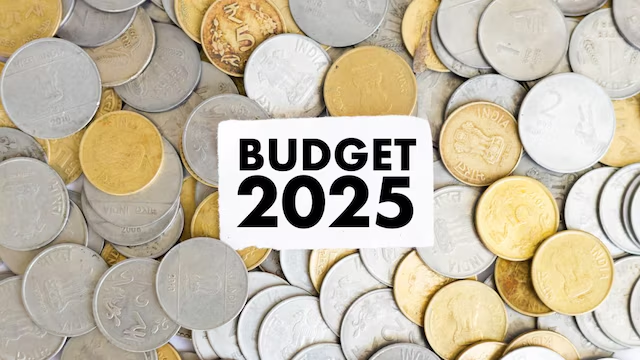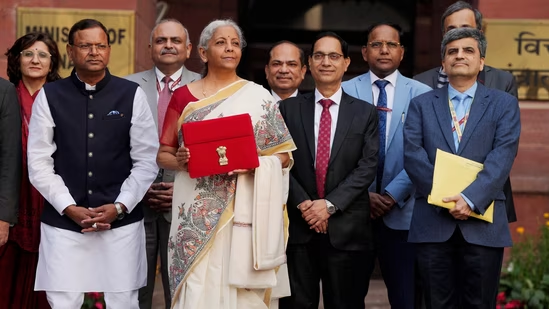Finance Minister Nirmala Sitharaman presented the much-anticipated Union Budget 2025-26 in Parliament today, outlining a roadmap for economic growth, fiscal consolidation, and social welfare. With a focus on boosting infrastructure, agriculture, digital innovation, and economic resilience, the Budget 2025 aims to balance the aspirations of various segments of the population while ensuring long-term stability.

Table of Contents
Taxation Reforms: Relief for the Middle Class
One of the most awaited aspects of the Budget 2025 was income tax reforms, providing relief to salaried individuals and small businesses. The government has raised the non-taxable income threshold from ₹7 lakh to ₹12 lakh under the new tax regime, offering substantial benefits to the middle class. Additionally, tax slabs have been revised to encourage more disposable income and higher consumption.
For corporate taxation, the Budget 2025 has reduced the corporate tax rate for small and medium enterprises (SMEs) from 25% to 22%, facilitating business growth and job creation. A special tax rebate has also been introduced for start-ups and businesses in emerging industries like artificial intelligence (AI) and renewable energy.
Fiscal Deficit and Economic Projections
The government has set a fiscal deficit target of 4.4% of GDP, lower than the previous year’s 5.1%, reflecting its commitment to fiscal discipline. The government plans to fund the deficit through market borrowings of ₹14.82 trillion, while emphasizing public investment in key sectors.
The Indian economy is expected to grow at a rate of 6.5% in the coming fiscal year, positioning the country as one of the fastest-growing major economies globally. However, concerns over global economic uncertainties, inflationary pressures, and geopolitical risks remain significant challenges.
Agriculture and Rural Development
With nearly 60% of India’s population dependent on agriculture, the Budget 2025 allocates ₹3.5 trillion for the agriculture sector, introducing several farmer-friendly initiatives, including:
- Interest-free loans for farmers up to ₹5 lakh under a new agricultural credit scheme.
- Expansion of the PM-Kisan scheme, increasing direct cash transfers to ₹8,000 per year from ₹6,000.
- Greater investment in cold storage chains, irrigation projects, and farm mechanization.
- A focus on organic farming and agro-processing industries to enhance rural employment.

Infrastructure Development and Urban Growth
The Budget 2025 earmarks ₹11 trillion for infrastructure development, emphasizing highways, smart cities, and railways. Key announcements include:
- Expansion of the National Highway network by 25,000 km, with an investment of ₹2.5 trillion.
- The introduction of a new bullet train corridor connecting Delhi and Chennai, reducing travel time significantly.
- Increased Budget 2025 allocation for urban housing schemes, ensuring affordable housing under the PM Awas Yojana.
Digital Economy and Technological Innovation
Recognizing India’s growing digital ecosystem, the Budget 2025 provides ₹1.2 trillion for technology-driven initiatives. Some of the major allocations include:
- ₹50,000 crore for AI-driven innovation and research, including AI-based healthcare and cybersecurity frameworks.
- Expansion of 5G networks to rural India, promoting digital inclusion.
- A push for digital banking and the promotion of fintech start-ups, ensuring seamless financial transactions.
- New initiatives to develop quantum computing and blockchain technology for governance and business solutions.
Education and Healthcare: Social Sector Boost
The Budget 2025 prioritizes social welfare, especially in education and healthcare, with an overall allocation of ₹6 trillion for both sectors.
Education:
- ₹2 trillion allocated for National Education Policy (NEP) implementation, focusing on skill development and vocational training.
- Establishment of 50 new medical colleges and 20 AIIMS-like institutions, addressing the doctor-to-patient ratio.
- Enhanced digital learning platforms to improve accessibility in rural areas.
Healthcare:
- The Ayushman Bharat scheme has been expanded to cover 60 crore citizens, offering free healthcare services up to ₹10 lakh.
- A ₹1 trillion fund for cancer research and vaccine development.
- Incentives for private hospitals to set up medical facilities in tier-2 and tier-3 cities.
Energy and Climate Action: A Green Push
In line with its commitment to achieve net-zero carbon emissions by 2070, India’s budget includes major investments in renewable energy and sustainability initiatives.
- ₹3.2 trillion for renewable energy projects, including large-scale solar parks and wind energy farms.
- Introduction of green hydrogen incentives, with a production target of 5 million metric tons by 2030.
- Tax exemptions for electric vehicles (EVs) and increased investment in charging infrastructure.
Defense and National Security
Given the geopolitical climate, the government has allocated ₹6.5 trillion for defense, ensuring modernization of the armed forces and border security. Major reforms include:
- A ₹1.5 trillion allocation for indigenous defense production, promoting self-reliance.
- Enhanced cybersecurity infrastructure to prevent digital threats and cyber warfare.
- Strengthening coastal security with advanced surveillance technology.
Women and Youth Empowerment
- The government has allocated ₹1.8 trillion for women’s empowerment initiatives, including financial support for female entrepreneurs and self-help groups.
- ‘Nari Shakti’ scholarships launched to encourage higher education for girls in STEM fields.
- ₹2.5 trillion for youth employment programs, including skill development and start-up incubation centers.
Tourism and Cultural Promotion
- ₹750 billion allocated to boost India’s tourism industry, focusing on heritage conservation and pilgrimage site development.
- Tax incentives for eco-tourism and adventure tourism, promoting sustainable travel.
- Special focus on improving hospitality infrastructure in states like Rajasthan, Kerala, and Uttarakhand.

Stock Market Reaction and Investor Sentiment
Following the budget announcement, Sensex surged by 800 points, reflecting investor optimism. The market responded positively to:
- Tax reliefs and investment in infrastructure.
- Financial sector reforms, including digital banking expansion.
- FDI liberalization in insurance and manufacturing.
However, market analysts caution against potential inflationary pressures due to higher government spending.
Conclusion: A Budget for Growth and Stability
The Union Budget 2025 balances growth, fiscal discipline, and social welfare. With significant allocations in infrastructure, agriculture, technology, and healthcare, the government aims to drive long-term economic growth while ensuring financial stability.
While industries and citizens welcomed the tax reforms and economic incentives, some experts argue that more direct relief could have been provided to MSMEs and rural businesses. As the policies roll out in the coming months, their real impact on India’s economic trajectory will become clearer.
